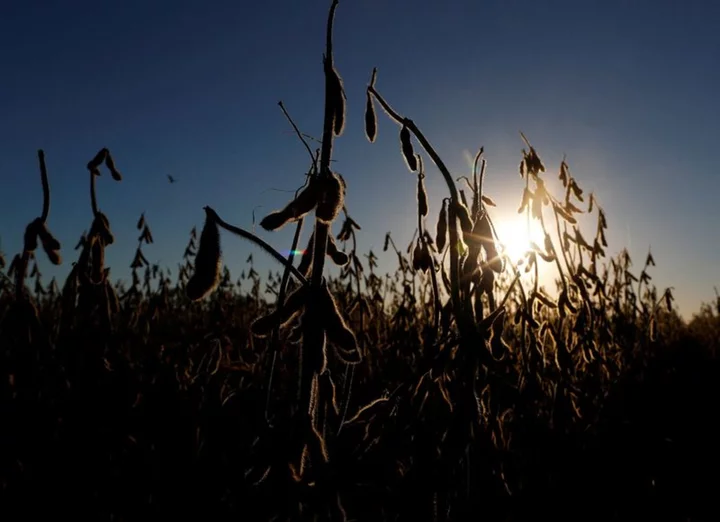By Maximilian Heath
BUENOS AIRES Argentina's giant soybean processing plants are running out of soybeans after a historic drought cut the crop in half, the head of the country's grains export chamber told Reuters, and this will leave well over two-thirds of factory capacity idle.
For years, the South American country was the world's top exporter of processed soy oil and meal. Its crown slipped this year after its crop was ravaged and as the indebted government has pushed exports of beans to bring in dollars.
"We are in a disastrous year," said Gustavo Idigoras, president of the grain exporters and crushing chamber CIARA-CEC, adding he expected idle capacity at the country's crushing plants along the Parana river to shoot past the current 65%.
"Idle capacity could grow significantly," he said, pointing out that the next soy harvest would not be until April and there would likely be just 3 million metric tons of soybeans left by the end of the month to last until then.
"With those 3 million tons we have to survive until May 2024," he said. "We want to turn the page to see if next year we get a better climate and higher farm production."
The likely increase in idle capacity will hit major grains traders such as Bunge and Cargill in Argentina, and has opened the door to rival producers. Neighbor Brazil, which had a bumper season, has overtaken Argentina for soymeal exports.
The drought, which dragged Argentina's 2022/23 soy harvest down to around 20 million tons, has forced the country to import a record number of soybeans from regional neighbors Paraguay, Bolivia and Brazil to keep its crushing factories open.
"Argentina may total 10 million tons of (soy) imports this year," Idigoras said, a new estimate. Government data show a record 8.2 million tons of soy imports until August, already over the 6.4 million tons for the entire drought-hit 2018.
According to the Ministry of Agriculture, between January and August the volume of crushed soybeans in Argentina fell 27% year-on-year to 19.6 million tons, the lowest figure for that period in official records that go back to 2015.
Idigoras added that he did not expect any officially declared wheat sales in the months ahead for the 2023/24 harvest as agreed shipments from the previous campaign are finally fulfilled. Exporters had been allowed to delay them due to the drought.
Last season's wheat harvest was cut in half to some 11.5 million tons, according to the local Rosario grains exchange, which estimates a better 15 million tons for the current season.
"There are no new (export) records, but there are records that have been rescheduled from the old campaign. That is why we won't see new records in the coming months," Idigoras said.
(Reporting by Maximilian Heath; Editing by Nicolas Misculin, Adam Jourdan and David Gregorio)









